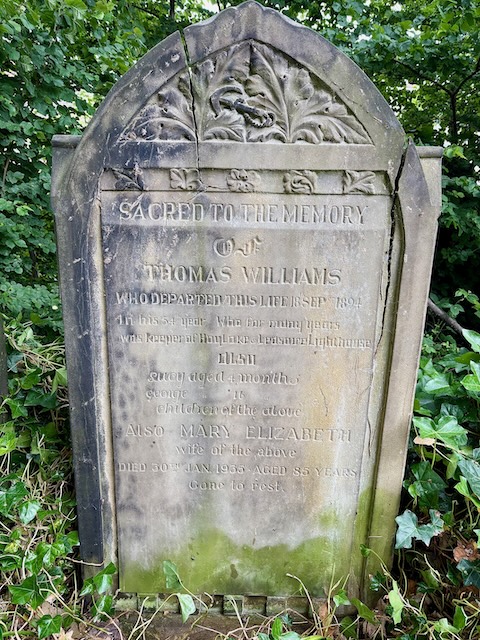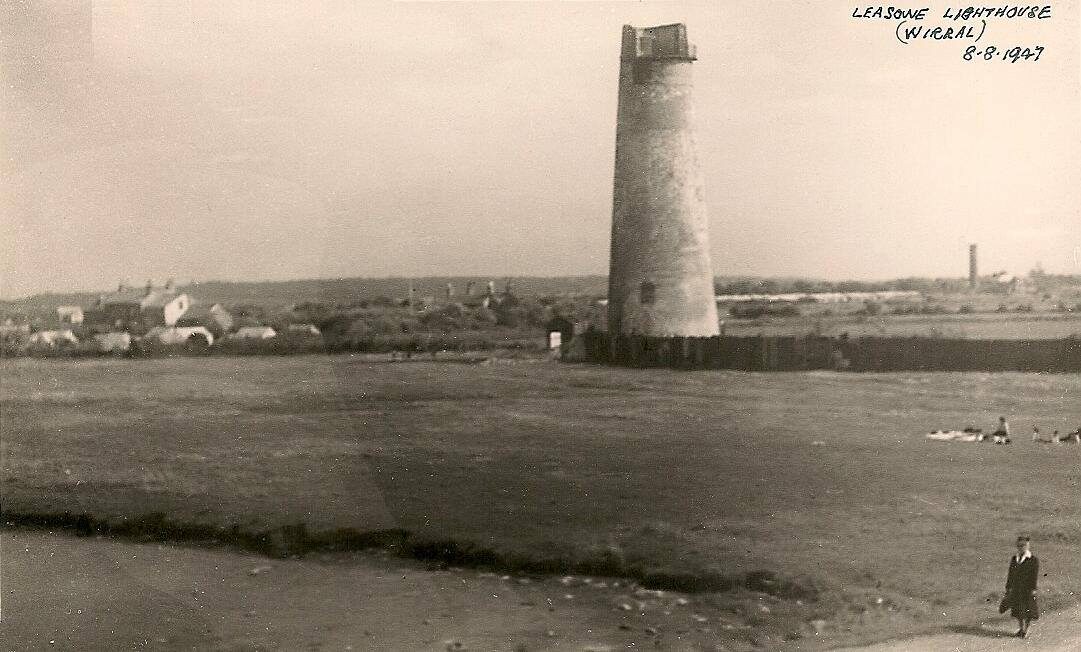Leasowe Lighthouse is the oldest surviving brick-built lighthouse in the U.K. and stands on the Leasowe common in the centre of the North Wirral Coastal Park. It was built in 1763 by the Mersey Docks and Harbour Board. A chart from 1689 shows no lighthouses or navigational aids, so mariners took bearing from Mockbeggar Hall (Leasowe Castle) and buildings on Bidston and Grange Hills. Large vessels would make their way into the Hoyle Lake or the smaller ships, bound for Liverpool, would use the Rock Channel into the River Mersey.
Towards the end of the 18th Century, the merchants of the rapidly expanding port experienced serious losses due to shipwrecks on the treacherous sandbanks of Liverpool Bay. It was at this time that a system of four light towers were built. Leasowe Lighthouse was one of these four lights on the North Wirral Foreshore. The Wallasey Embankment was later constructed between 1829 and 1850 by the Liverpool Corporation following an Act of Parliament, to prevent tides breaking through and joining Wallasey Pool.

Originally two lighthouses were built at Hoylake, then a major fishing port, and two at Leasowe. The Leasowe lighthouses were called the “Lower Mockbeggar Light” and the “Upper Mockbeggar Light”. These two fixed lights, when lined up, provided and ensured a safe passage for ships into the Horse Channel. The “Lower Mockbeggar Light” was built on the shoreline a quarter of a mile away but was washed away during a storm in 1770, only seven years after being constructed. It was replaced by one on Bidston Hill in 1771.
Leasowe Lighthouse was built with 660,000 hand-made bricks. The building is circular and all its cavity walls are over a metre thick. The lighthouse is approximately 34 metres tall and is said to have its foundations built on bales of cotton which came from a ship that foundered nearby. Leasowe lighthouse also provided living accommodation for the keepers and their families within its eight rooms.
A map of the Wirral shoreline showing the “Sea Lights” at Leasowe and “Lake Lights” at Hoylake circa 1765
The ground floor was a storeroom, the first floor housed the kitchen and living room, the second floor was used as a bathroom and a sitting room and the three levels above were used as bedrooms. Above that was a room with a domed roof which was said to be the Lumber Room. The top room was known as the Light Room.
To access these rooms, the building possessed 130 wooden steps, which gave access to the seven floors. A fire at Crosby lighthouse in which 3 people lost their lives lead to the wooden steps being replaced with cast iron ones in 1898.
The out-buildings comprised of a coach house, stable and hayloft, pigsty, W.C. and wash house. The light was coal fired and converted to oil burning in 1772. It remained an oil burner for the remainder of its operational life.
Lighthouse Keepers were first mentioned in the minutes of a Town Council meeting on the 1st of February 1764, when it was ordered that “Alexander Smarley, John Bennett and Samuel Ainsdell be appointed to attend the Lighthouses to make the Lightfires there”. Alexander Smarley became the first keeper of Leasowe Lighthouse at the age of 19.
The last keepers at Leasowe were Mr Thomas Williams and Mrs Mary Elizabeth Williams who moved into the lighthouse in February 1892. Mr Williams died in 1894 and Mrs Williams took over as keeper assisted by her daughters and was one of only a few known woman lighthouse keepers in her day. By 1908 a series of buoys with lights had been installed along the sea channels so the lighthouse was no longer needed. The light was lit for the final time on July 15th 1908.
Mrs Williams remained as caretaker of the lighthouse until 1910 when she was replaced by a permanent caretaker. The Harbour Board agreed that Mrs Williams could run a tearoom from the ground floor, which she did until around 1930, 5 years before she died in 1935.
Wallasey Corporation purchased the lighthouse for £900 in 1930. The Building remained derelict until 1989 during which time the lighthouse was neglected and badly vandalised.
The lighthouse in 1947 with no roof and the outbuildings demolished
Public pressure eventually caused action to be taken to stop the decay and the exterior was painted in 1973. After several years of delays because of planning and leasing issues, plus the need to apply for grants, a firm of developers resubmitted plans for a £500,000 scheme to develop the lighthouse. This action failed and was directly instrumental in the formation of the ‘Friends of Leasowe Lighthouse’.
In 1989 the Council approved a £30,000 scheme to refurbish the lighthouse and a Rangers’ office was provided on the ground floor. The lighthouse was given a new roof, a clean inside and out and the windows sealed to prevent the pigeons, who had had free reign of the lighthouse for 50 years, re-entering. The outside was then painted.
2006 saw The Countryside Agency award a Local Heritage Initiative Grant of £25,000 for a Heritage Banner Project, which is now permanently displayed in the ground floor exhibition area of the lighthouse.
The Friends of Leasowe Lighthouse have been working hard to raise money to restore this building since 1989 and are committed to the restoration and development of Leasowe Lighthouse and its environment, for the purpose of education and public enjoyment. Standing at the centre of the North Wirral Coastal Park, Leasowe Lighthouse is adjacent to many sites of special scientific and biological interest, making it a natural centre for learning and a site of public interest. The Lighthouse features guided tours, special events and a Visitor Centre with displays about Leasowe Lighthouse, the North Wirral Coastal Park and the Wirral Coastline.




